
What's the Quickest Way to Solve a City's Traffic Congestion?
Jump Ahead
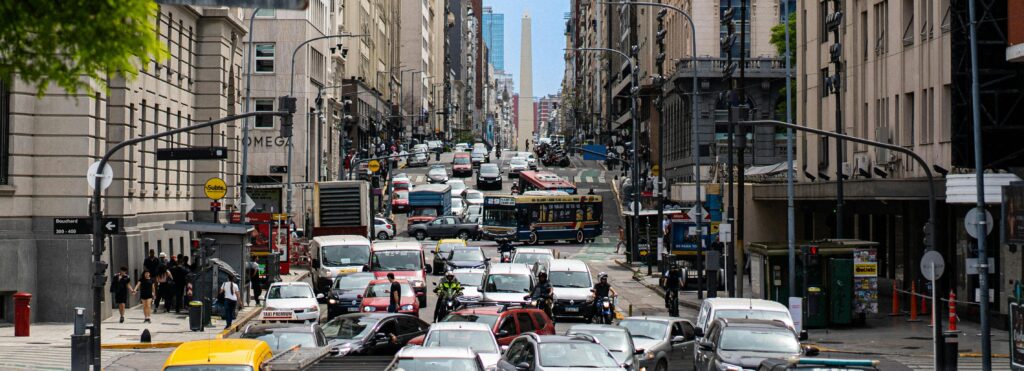
Traffic congestion is one of the most persistent problems facing modern drivers. According to the Texas A&M Transportation Institute, the typical U.S. driver loses 54 hours a year (about an hour each week) to congestion. This costs the average commuter over $1,100 annually. [1]
These losses, along with safety concerns associated with increasing urban congestion, make finding solutions for traffic congestion a critical task for transportation planners and community stakeholders. As populations grow and commute distances increase, the problem only promises to grow worse without intervention.
Once you begin to dig into the causes of traffic congestion, however, it quickly becomes clear that this is a complex issue. Although adding lanes to roadways has often been treated as a silver bullet to address limited capacity, this has often been shown to compound existing congestion in the long term by inducing demand. In reality, there’s no quick fix for overcrowded urban roadways, and effective congestion reduction often requires a multi-pronged approach. Nonetheless, when planners and agencies can analyze a range of data and uncover the real causes of congestion in their area, they can pave the way for more free-flowing and safer roads.
Below, we’ll explore this challenge in detail, covering:
- What can cause city traffic congestion?
- Narrowing down causes case by case
- Traffic congestion solutions
- Fixing traffic congestion problems with a multi-pronged approach
- Undoing urban congestion with big data
What Can Cause City Traffic Congestion?
Finding adequate traffic congestion solutions first requires a thorough understanding of the potential causes involved in any given region, and these vary by the type of area — urban or rural. For a broad overview of these contributing factors, planners often refer to the Federal Highway Administration’s (FHA) “sources of congestion” estimates, which break down the primary causes for urban and rural areas as follows: [2], [3]
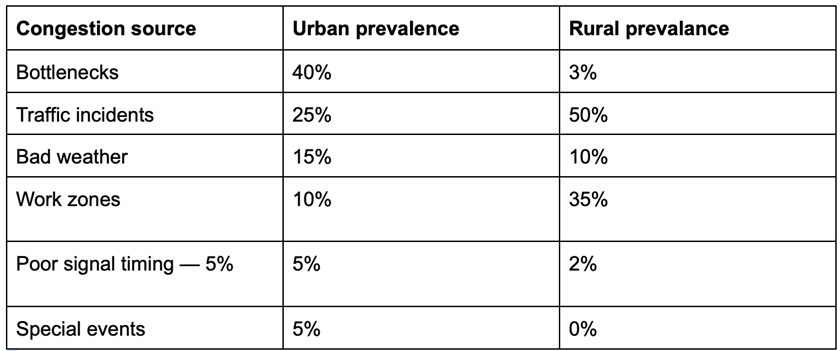
These are national averages, and the specifics vary significantly from one urban or rural area to another. The Texas A&M Transportation Institute has conducted extensive research on traffic congestion causes in several urban areas, and the data shows that the prevalence of specific causes can be quite different even within the same region. For example, roadwork is responsible for 26% of urban traffic congestion incidents in Pittsburgh’s 11th District, but only 17% of incidents in Philadelphia’s Sixth District. [2]
Moreover, focusing only on these categories would severely limit our understanding. Traffic congestion is exacerbated by uniquely 21st-century issues, some of which aren’t yet reflected in the FHA data. For instance, research points to six additional factors that contribute to congestion:
- Economic expansion
- Demographic changes and urbanization
- Transportation disruption from ride hailing and Transportation Network Companies
- E-commerce and on-demand delivery
- Insufficient infrastructure investment
- Mixed effectiveness of current congestion solutions [4]
Given that each of these factors is multifaceted in its own right, it’s safe to say that congestion is a complex problem requiring a diverse array of solutions.
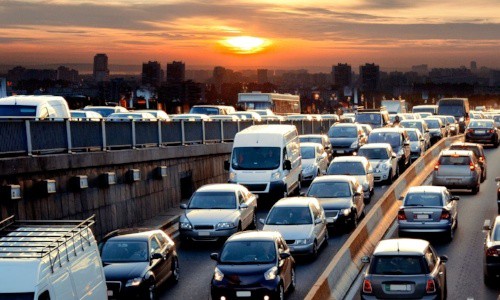
The Consequences of Congestion
If the causes of congestion are difficult to sort out, its consequences are even more so. Some results are more obvious than others. As previously noted, it’s easy enough to extrapolate the costs of congestion on an individual level. When U.S. drivers spend about an hour each week dealing with traffic jam problems or other slowdowns, the costs add up in terms of time and fuel.
Even more troublesome is the connection between congestion and accidents. Research results vary, and the exact relationship between the two isn’t entirely clear. However, the best data seems to support a bell-shaped curve, where accidents occur most frequently in low-traffic and high-traffic situations. The former is likely due to higher speeds on open roadways, while the latter is likely related to the volume of traffic. [5]
More research is needed to better explain these connections, but it’s clear that congestion and accident volume are related, making congestion not merely an issue of cost and convenience but also road safety.
Narrowing Down Causes Case by Case
To gain a more precise understanding of the causes and consequences of traffic congestion, planners and other stakeholders need a clearer picture of what’s happening on the roadways in their regions. No two regions are the same, and finding unique solutions requires a granular analysis of how each factor is shaping outcomes in a particular area.
The Role of Data
Leveraging data allows planners to get to the underlying issues creating traffic congestion. It encourages a deeper exploration of potential causes, such as:
- Sources and destinations of traffic
- Participants in the traffic jam and their reasons for being on the road
- Daily and weekly time trends
- Alternative routes or transportation options
Armed with tools for collecting traffic data, planners can find more precise reasons for congestion — and plan better solutions to the problem. Only with detailed analysis can the discussion move from generalities to actionable specifics and avoid falling back on tired, ineffective traffic congestion solutions.
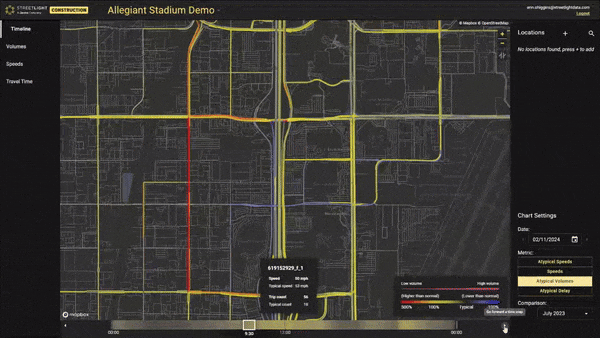
What Doesn’t Work to Decrease Congestion?
Historically, urban planners resorted to a one-size-fits-all solution for traffic congestion: Add more lanes. It seems obvious — more space for cars should lead to less cramped corridors, right?
Ultimately, the answer is no. Adding lanes has often been shown to induce even greater demand, inviting more traffic in the long run. Rather than targeting what’s pushing traffic into the area, this approach makes room for even more drivers to flood the congested space. Without a more obvious alternative, drivers will simply gravitate toward the expanded roadway.
Additionally, expansion is expensive — $15 million per lane on average as recently as 2014, according to the Highway Economic Requirements System. Lane construction also causes additional congestion, resulting in significant delays during the project. Ultimately, this approach falls short of addressing larger concerns of public health, safety, and equity, because it fails to ask deeper questions about why heavy traffic is present to begin with.
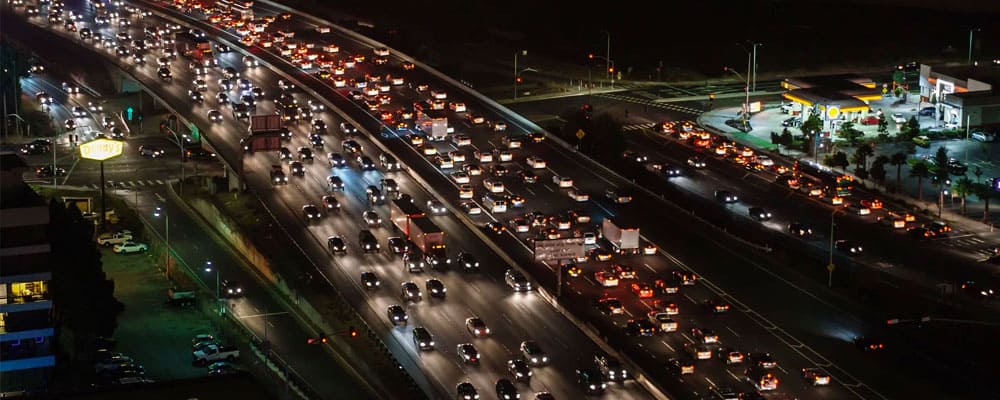
Solve congestion WITHOUT highway expansion
Get Congestion Solutions GuideTraffic Congestion Solutions
When they’re able to conduct a robust analysis, planners often find that the answers are entirely different than what they anticipated. While there are many potential courses of action, data points to five particularly effective solutions for urban congestion.
Improving Traffic Flow
There are numerous ways to improve traffic flow, and the right options depend on the nature of the congestion problem at hand. The Texas A&M Transportation Institute provides several solutions, including intersection improvements, loop ramps to reduce left turns, and designated lanes for high-occupancy vehicles or public transit. [6]
The key to choosing the best option is to explore traffic data to find out where the bottlenecks are coming from. For example, planners in Shreveport, Louisiana, were able to leverage data to find precise solutions to congestion problems in their region. By closely examining 158 miles over six corridors, they determined where the greatest speed reductions were occurring and pinpointed six miles with severe congestion. This information led them to tangible solutions, such as intersection signage, highway on-ramp signaling, and expanded capacity in select corridors.
Road Diets
Another highly effective way to manage traffic congestion is to implement what are known as “road diets.” This is the opposite approach from adding lanes — instead, it reduces available driving lanes in favor of center turn lanes, bike lanes, bus lanes, landscaping, or other uses.
While this may seem counterintuitive, road diets have been shown to reduce traffic and accidents when properly implemented. To find good candidate corridors and choose the right solution, city planners must examine key metrics such as Annual Average Daily Traffic (AADT), Vehicle Miles Traveled (VMT), and Turning Movement Counts (TMC), in addition to measurements of pedestrian and bicycle activity. By understanding the exact nature of area traffic flows, planners gain invaluable insights into what road diet approach would be most effective.
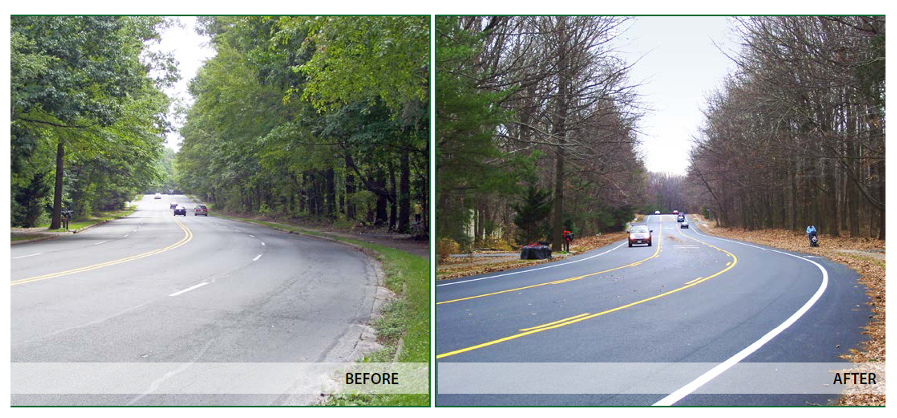
Travel Demand Management
In many cases, the ideal way to address traffic jam problems is to reduce car travel demand in the affected area and increase the use of other methods such as public transit or cycling (this is part of why road diets that add infrastructure for cyclists, pedestrians, or transit can be effective congestion mitigation tactics). This approach examines the sources of traffic and readily available alternatives that may redirect, reduce, or replace it.
One region, in particular, provides a pointed case study for this solution. Napa Valley planners were surprised when traffic data revealed that congestion was a result not of tourists and pass-through commuters, but of employees driving into the area for work. This information transformed their approach to congestion mitigation, directing them to focus on optimizing bus routes and building affordable housing for workers to move to the area.
Congestion Pricing
Congestion pricing involves the use of tollways to discourage some drivers from using certain roadways. An effective — albeit controversial — option for solving traffic problems, tollways transfer more of the responsibility to those who use the roadways. It invites them to consider whether the convenience of the route is worth the extra cost. Unlike fuel taxes, which penalize all drivers indiscriminately, tollway pricing charges drivers for the miles they drive in highly congested areas. Similarly, high-occupancy vehicle (HOV) lanes can charge vehicles with low occupancy to use them while allowing HOVs to pass free of charge.
Before implementing congestion pricing, deep data analysis is required. Planners should evaluate area demographics, traffic sources and destinations, public transit options, and more. When done correctly, such a program can reap big rewards for the region. After implementing a form of congestion pricing (and making other improvements) along IH-10 and IH-110, Los Angeles saw bus ridership increase between 27% and 37% in those areas, reducing the proportionate number of cars on the road.7
Expanded Transportation Options
Transportation planners must also think more broadly about the transportation options in their region. Multimodal transportation, for instance, is a critical solution for traffic congestion issues. This focuses planning efforts not merely on reducing traffic, but on creating and expanding alternative options for transportation. It emphasizes people over cars by adding measures like more bike lanes, pedestrian corridors, and forms of micromobility such as e-bikes and scooters.
Planners in Northern Virginia found that traffic data pointed them toward precisely this solution to their congestion conundrum. They analyzed the numbers to discover corridors with the highest proportion of short trips. This allowed them to focus on improving bicycle and pedestrian routes, expanding bike-sharing options, and adding more shuttles, eliminating as many as 3.8 million vehicle trips annually.
Public transportation is another facet of multimodal mobility, and it’s a congestion solution in its own right. Investment in public transit involves more than merely adding more buses or increasing the number of light rail trains, however. Creative solutions can involve adding more bus lanes or adjusting bus schedules to better match commute schedules and encourage more ridership.
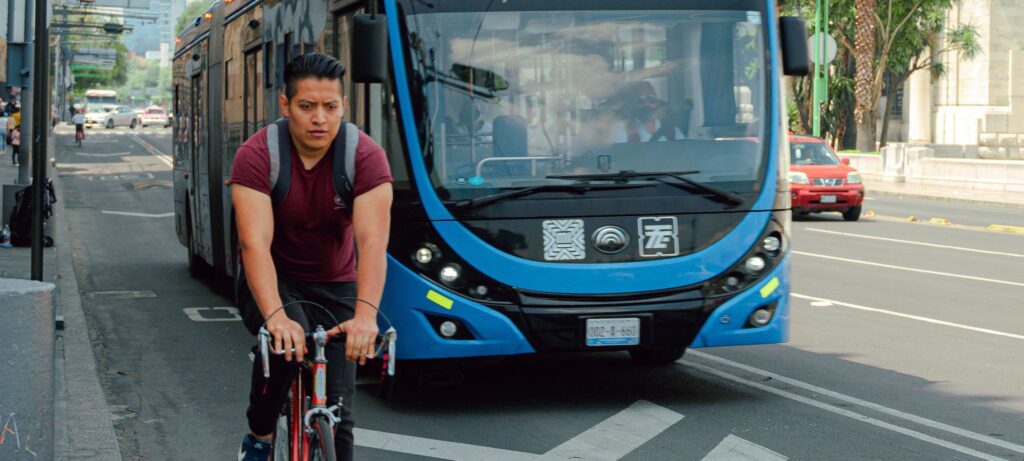
Fixing Traffic Congestion Problems With a Multi-Pronged Approach
Addressing traffic congestion requires a careful, nuanced approach to the problem. As you can see from just a few examples, the causes of congestion are as diverse as the regions that deal with it. Solutions must be tailored to specific causes to truly be effective.
In most cases, this will require a multi-pronged approach rather than a single solution. Like the planners in Napa, Shreveport, and Northern Virginia, you may find that your city’s busiest corridors require a few adjustments to bring congestion down to more manageable levels. Congestion pricing may not work in your area, but perhaps combining road diets with a multimodal approach will do the trick.
What is Traffic Congestion Analysis?
Transportation planners and engineers often gather data existing roadway conditions to identify congested road segments, diagnose the causes of delays, and determine the best solution to improve traffic flow.
Metrics used to measure congestion and evaluate solutions often include:
- Vehicle Hours of Delay – to understand where and when traffic delays occur, and how severe they are
- Vehicle Speeds – to understand where and when traffic slows to below free-flow conditions
- Vehicle Volumes – to determine whether roadway capacity is sufficient to support actual vehicle activity, and where traffic could potentially be rerouted
- Turning Movement Counts – to understand how traffic patterns at intersections impact congestion on the nearby road network
Transportation analysts may combine data from physical traffic counters, manual counts, surveys, and big data platforms to create a comprehensive picture of congestion causes and potential solutions.
Undoing Urban Congestion With Big Data
As with any complex issue, there is no quick fix to traffic congestion. But having big data at your fingertips can put congestion mitigation in the fast lane by avoiding the delays and sample size challenges with traditional data collection methods such as manual counts and surveys.
StreetLight’s Congestion Management Quickview, a feature of StreetLight Insight®, is specifically designed to help planners and engineers quickly access detailed data on congestion trends for their region. It enables easy analysis of important metrics like hourly traffic volume and throughput, and you can use it to compare data across different metro areas.
To learn more about how it works, check out this step-by-step walkthrough. And for more info on big data solutions to traffic congestion, check out our Congestion Solutions page.
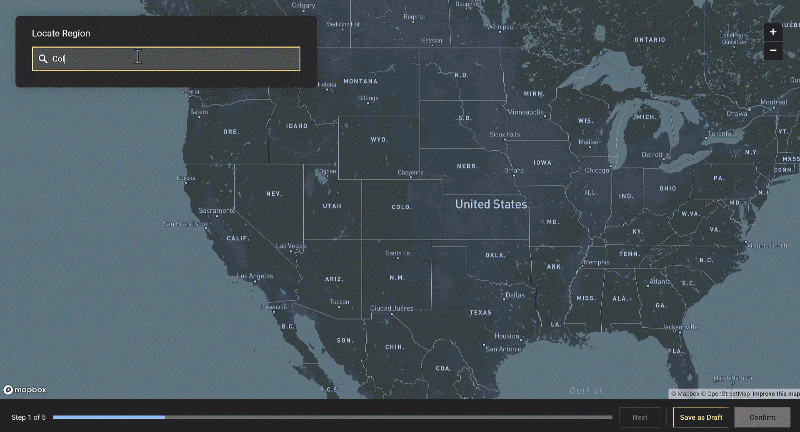
- Texas A&M Transportation Institute. “2021 Urban Mobility Report.” https://static.tti.tamu.edu/tti.tamu.edu/documents/mobility-report-2021.pdf
- Texas A&M Transportation Institute. “Support for Urban Mobility Analysis.” https://static.tti.tamu.edu/tti.tamu.edu/documents/TTI-2021-2.pdf
- Federal Highway Administration. “Traffic Congestion and Reliability: Trends and Advanced Strategies for Congestion Mitigation.” https://ops.fhwa.dot.gov/congestion_report/executive_summary.htm
- PwC. “Mobility insights: Tackling the growing issue of congestion in urban areas.” https://www.pwc.com/us/en/industries/industrial-products/library/mobility-insights-tackling-congestion.html
- National Library of Medicine. “Current Understanding of the Effects of Congestion on Traffic Accidents.” https://www.ncbi.nlm.nih.gov/pmc/articles/PMC6766193/
- Texas A&M Transportation Institute. “How to Fix Congestion.” https://policy.tti.tamu.edu/congestion/how-to-fix-congestion/
- Texas A&M Transportation Institute. “Variable Pricing.” https://static.tti.tamu.edu/tti.tamu.edu/documents/policy/congestion-mitigation/variable-pricing.pdf

Get traffic flowing with nine data-driven congestion solutions
Get Congestion Solutions GuideReady to dive deeper and join the conversation?
Explore the resources listed above and don’t hesitate to reach out if you have any questions. We’re committed to fostering a collaborative community of transportation professionals dedicated to building a better future for our cities and communities.